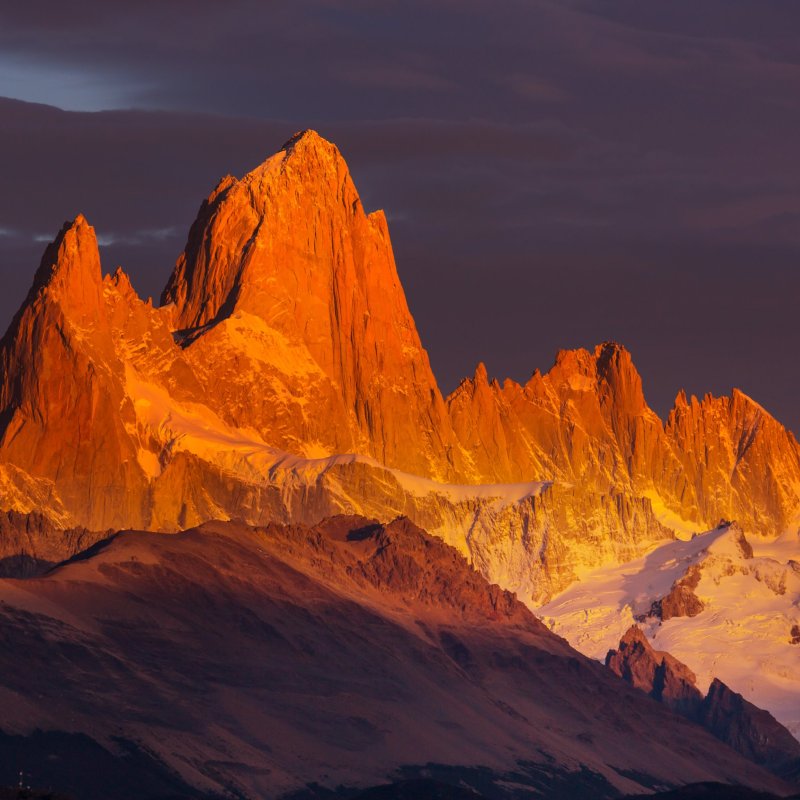
There are only a few places on earth where the word marvel is appropriate to describe the literal experience one may have. Chile and Argentina’s Patagonia region is one such place. A living landscape painting yielding natural wonders such as coastal fjords with dazzling views of icebergs biding their time, glacial lakes and forests, the grandeur of soaring, snow-capped mountain peaks, and of course, penguins.
Videos by TravelAwaits

Spectacular Wildlife
The vast Patagonia region is home to multiple forms of visible wildlife, including pumas, grey foxes, guanacos, wild horses, pink flamingos, and, of course, the sea lions and the penguins. Ah, the penguins. The area’s natural beauty aside, the penguins of Isla Magdalena are among the most popular attractions in the region. To see them, you’ll need to include Punta Arenas on your itinerary. Punta Arenas is a large city in the southernmost part of the Patagonia region.
Passengers embark on boats from the pier at Laredo Bay toward Santa Marta and Magdalena Islands, according to Welcome Chile. Santa Marta is home to a large sea lion colony. After a stop there, it’s on to the main event. Magdalena is home to more than 150,000 Magellanic penguins. You’ll need to dress warm and have some good shoes because you’ll be hiking inland to get as close to the penguins as possible.

Breathtaking Scenery
Patagonia is home to some of the most breathtaking natural wonders on earth. A must visit is Los Glaciares National Park. Top to bottom, you’ll see a glorious storyline of mountains, including a large portion of the Andes buried under centuries of ice and snow, as well as icebergs, glaciers, glacial lakes, and lush wood valleys.
The most famous of the glaciers, Perito Moreno, is located in the southern part of the park. “It towers above the turquoise glacial water of Patagonia’s Los Glaciares National Park,” writes Atlas Obscura, “beaming a blinding white and exuding cold blue hues. Unlike most of earth’s other glaciers, Perito Moreno is still growing.”
Up in the northern part of the park, you’ll find Monte Fitz Roy. Originally known by its aboriginal name, Chalten, which means “smoking mountain,” Fitz Roy is a favorite for hikers, climbers, and photographers. A rare cloud-phenomenon oftem makes the mountain look like a smoking volcano.

Hike On Glaciers
For many travelers, a visit to Patagonia is for one reason: to hike the glaciers. In addition to Los Glaciares National Park, you can also hike the glaciers in Torres del Paine National Park.
Some say Torres del Paine National Park is “the reason people fall in love with Patagonia.” This park is dominated visually by the three granite peaks that create the mountain range, all of which can be seen best by hiking the famous W Trek. Normally a four- to five-day hike, it offers some of the best views possible of the Base of the Towers, the French Valley, and Grey Glacier.
The Grey Glacier is a part of the larger Southern Patagonian Ice Field and is the highlight of hiking Torres del Paine. At its highest, the ice reaches 100 feet and is nearly 4 miles across. Hiking on the ice itself does not require any special training, according to Swoop Patagonia. Just grab some crampons and an ice ax. “If you relish an adventure and have never before walked over the top of a glacier, this is a fantastic place to start.”
Los Glaciares National Park is home to more than a dozen glaciers. The best of these can be found at Chalten. Here, you can take day hikes to the Torre and Grande glaciers. Another option is a multi-day trek to Pasa del Viento, where you can get views of the Patagonian Ice Cap. Another popular trek is to see the Tronador (thunder) Glacier, which gets its name from the sound of falling ice crashing hundreds of feet below.

The Night Sky
Patagonia has been called an astronomers’ dream come true and possibly the best place on Earth to observe the stars. Because of the sparse population in the region, light pollution is low, allowing for excellent viewing year-round. Star trekking is now as popular as glacier trekking.
There are professional observatories all across the area that provide public viewings at specific times during the week, so plan ahead. But there are also plenty of tourist observatories. Mamalluca Observatory is among the best. It’s located six miles from the town of Vicuna and offers guided tours and views of the stars and planets from dozens of small telescopes. If you’re bringing your own equipment, Panque Observatory, ten miles south of Vicuna, allows anyone to set up on or rent equipment.
Star trekking tour packages are also available, and many observatories offer them in conjunction with hotels in Pisco Elqui, Vicuna, and Ovalle.
Before You Go
Technically, the Patagonia region spans two nations, Chile and Argentina, so make sure you are clear about what parts of the region you want to visit, and plan accordingly.
Unless you are planning to camp, the lodging in this area is more on the luxurious side than you might think. One idea is to check out the villas designed by Chilean architect Felipe Assadi, Awasi. They are built into the hillsides facing the Torres del Paine. From here, you’ll have plenty of options to plan guided or solo adventures.
Finally, be sure to check the difficulty-levels of any excursions you plan to go on. Bring the necessary equipment, clothing, and provisions.

